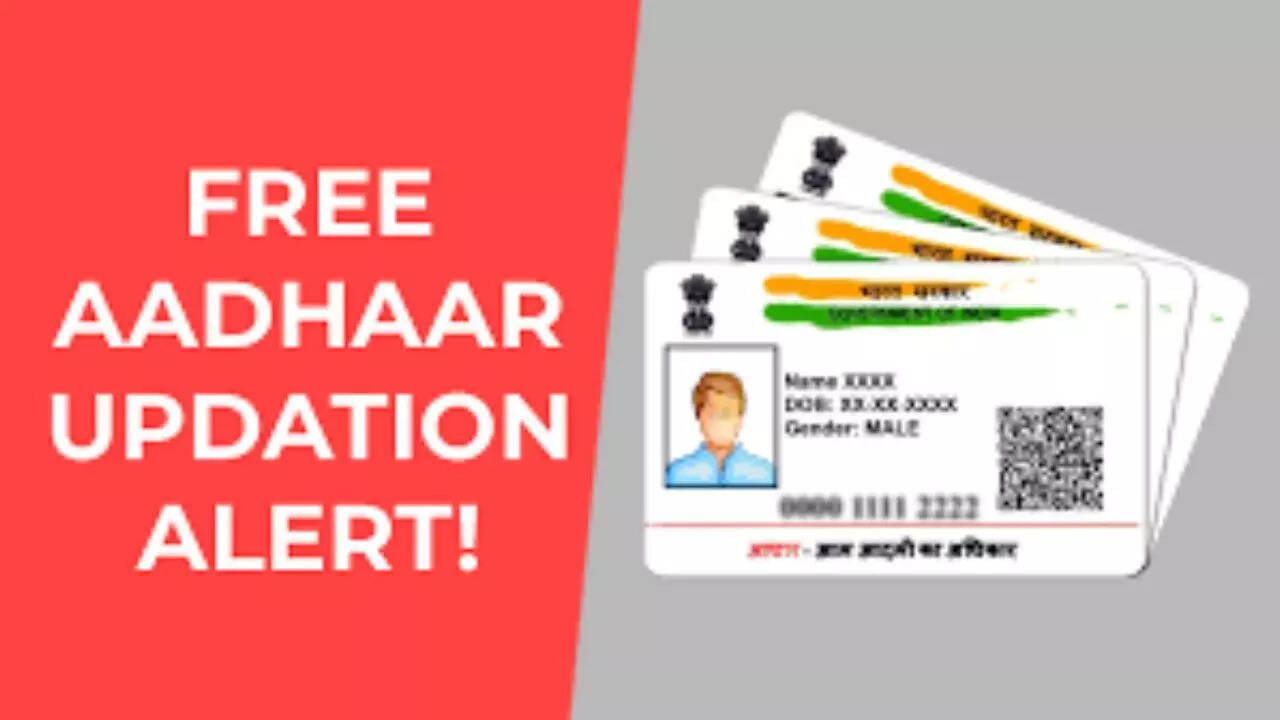Indian residents are urged to update their Aadhaar details online for free before the deadline of June 14, 2025, as announced by UIDAI. Updating Proof of Identity (PoI) and Proof of Address (PoA) ensures data accuracy and avoids potential issues with essential services.
Okay, here’s a rewritten blog post inspired by the provided news article, designed to be engaging, human, and opinionated where appropriate, while avoiding common, repetitive phrases:
Aadhaar Update: Don’t Get Caught Out! Your Free Ride Ends Soon…
So, here’s the deal, folks. We’ve all got that little piece of laminated plastic – or maybe it’s just a digital file lurking on your phone – that’s become as essential as our wallets these days: our Aadhaar card. And right now, there’s a ticking clock you need to be aware of if you want to avoid unnecessary hassles (and potentially, some fees).
Remember all that initial excitement (and perhaps a little anxiety) when Aadhaar was first introduced? Well, the system isn’t static. Addresses change, phone numbers get updated, and sometimes, even our photos need a refresh after a few years of, well, life happening! The UIDAI, the folks in charge of Aadhaar, have been pretty generous in allowing free updates online for a while now, giving us the chance to keep our details current.
But here’s the catch: that free ride is coming to an end, specifically June 14th, 2024. After that date, updating your Aadhaar details online will likely mean dipping into your pocket. It feels like a bit of a sneaky move, right? Lure everyone in with the “free” tag, then slowly but surely start charging once everyone is dependent on the system.
Now, why is keeping your Aadhaar updated so important? Imagine trying to open a new bank account, applying for a loan, or even accessing certain government services with outdated information. It’s a recipe for bureaucratic frustration. Nobody wants to be stuck in a never-ending loop of paperwork and verification, especially when it’s something easily avoidable.
Think of your Aadhaar as your digital identity in India. It links you to everything from your bank accounts to your SIM card. Making sure that identity is accurate protects you from potential fraud, ensures you can access essential services smoothly, and generally makes life a whole lot easier.
What Needs Updating and How?
The UIDAI is primarily concerned with demographic details – your address and other personal information. This makes sense, given how often people move or change contact information. If you’ve shifted residences in the last few years, changed your mobile number, or even just want to ensure the information on your card is accurate, now’s the time to act.
Updating online is relatively straightforward. Head over to the UIDAI’s official website (uidai.gov.in), use the ‘My Aadhaar’ portal, and follow the instructions. You’ll need to have your registered mobile number handy, as you’ll receive an OTP (One-Time Password) for verification. And of course, you’ll need valid documents to support any changes you make – a scanned copy of your passport, driving license, or other acceptable ID.
Now, If you’re not comfortable navigating the online world, or prefer a more hands-on approach, you can always visit an Aadhaar Enrolment Center. But keep in mind that offline updates have always been chargeable and that’s not changing (at least for now). So, if you have the digital savvy, it’s worth trying the online route before the deadline.
Why This Matters (Beyond Just Saving a Few Rupees)
While the thought of paying a small fee for an update might not seem like a huge deal, it underscores a larger issue: digital access and equity. While many of us are comfortable using online services, a significant portion of the population still faces challenges with internet access, digital literacy, and reliable technology. Charging for online updates creates a barrier, potentially disproportionately affecting those who can least afford it.
It also raises the question: should a fundamental identity document, crucial for accessing basic services, come with ongoing costs? There’s a valid argument to be made that maintaining an accurate national identity database should be a public service, freely accessible to all citizens.
Beyond the ethical considerations, there’s also a practical one. An outdated Aadhaar database ultimately undermines the efficiency and effectiveness of the entire system. It creates more work for everyone involved – from banks and government agencies to individual citizens.
The Bottom Line: Don’t Delay!
So, take a few minutes, check your Aadhaar details, and update anything that needs changing before June 14th. It’s a small investment of time that can save you from potential headaches down the road. And who knows, maybe if enough people raise their voices, the UIDAI might reconsider the move to charge for online updates. After all, a system designed for inclusivity should be accessible to everyone, regardless of their digital skills or financial situation. Let’s hope common sense prevails!
📬 Stay informed — follow us for more insightful updates!







